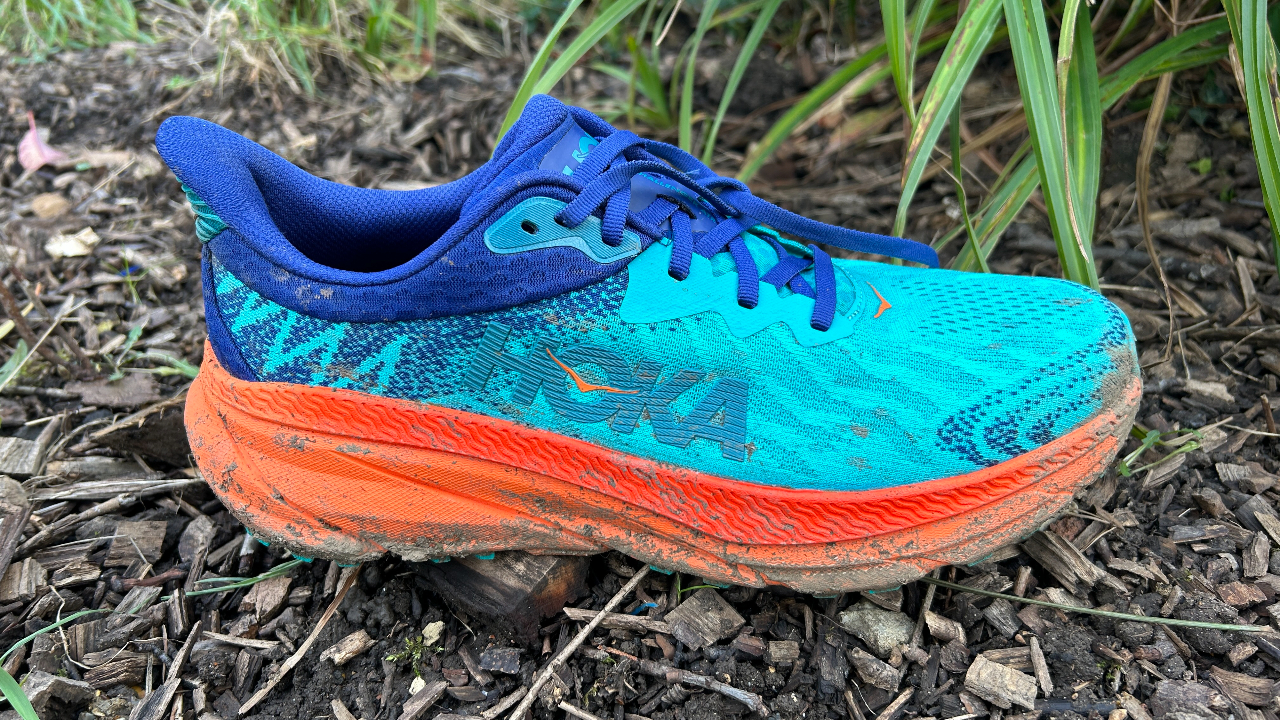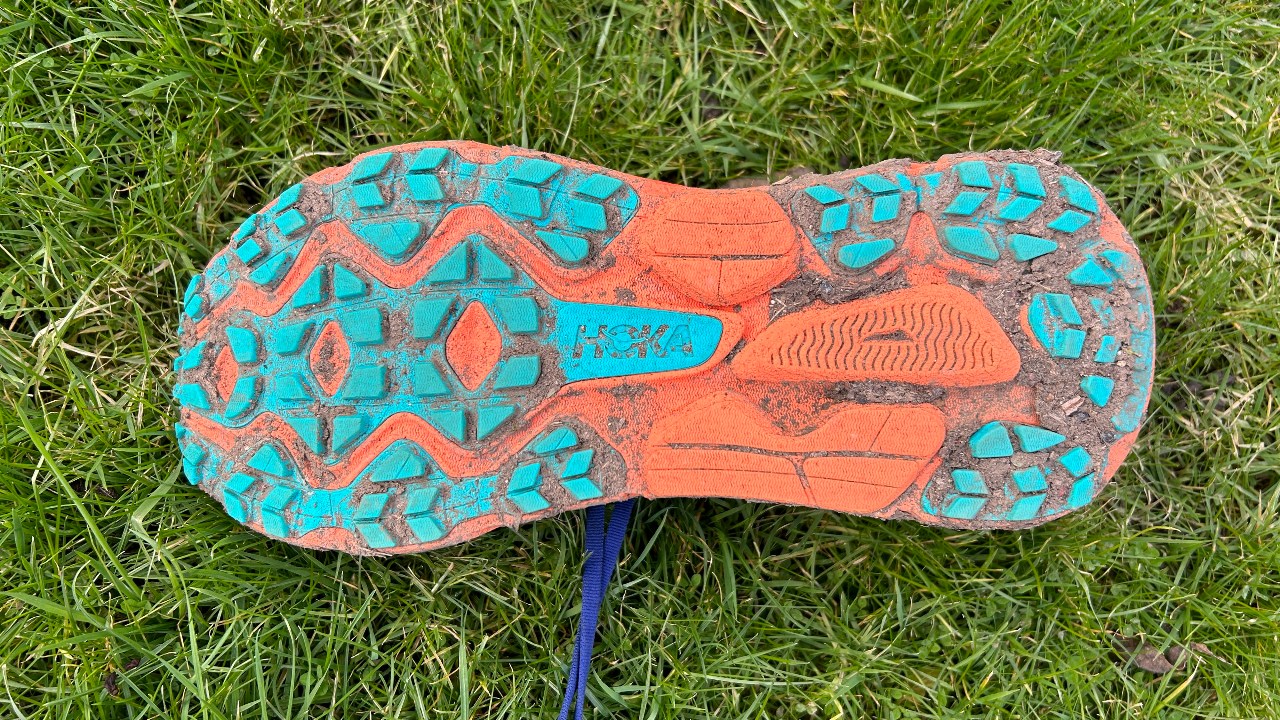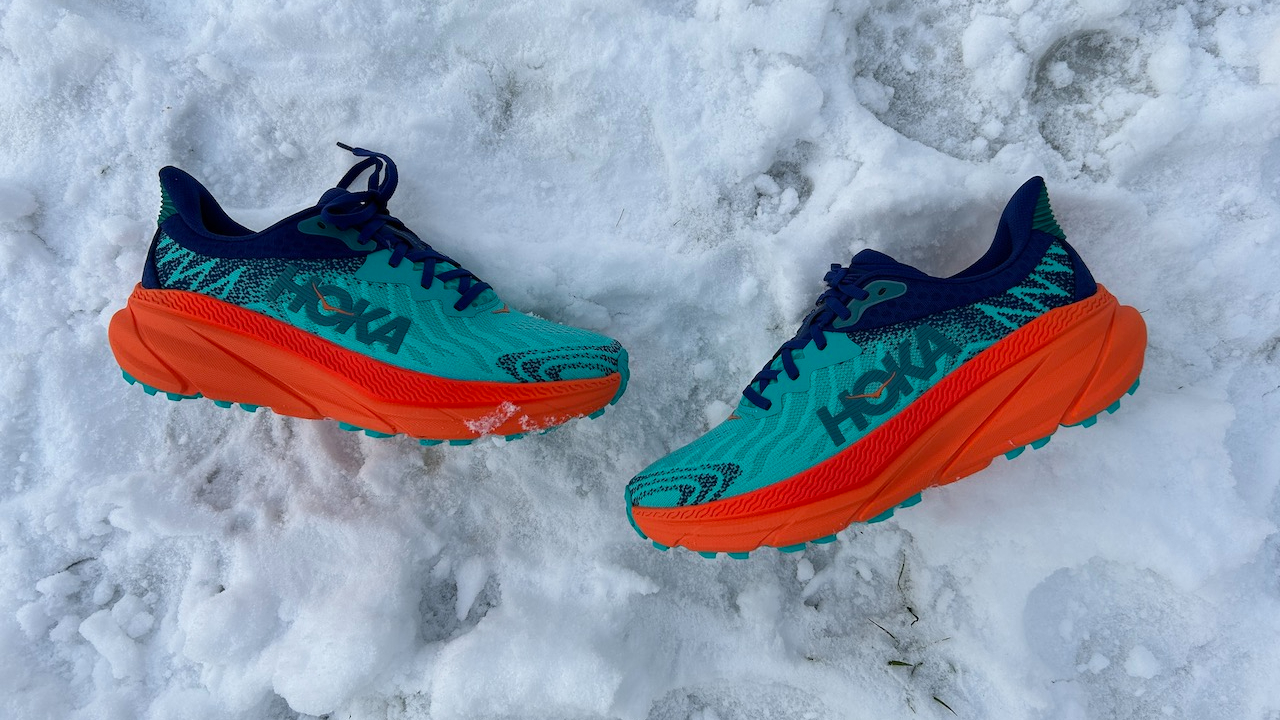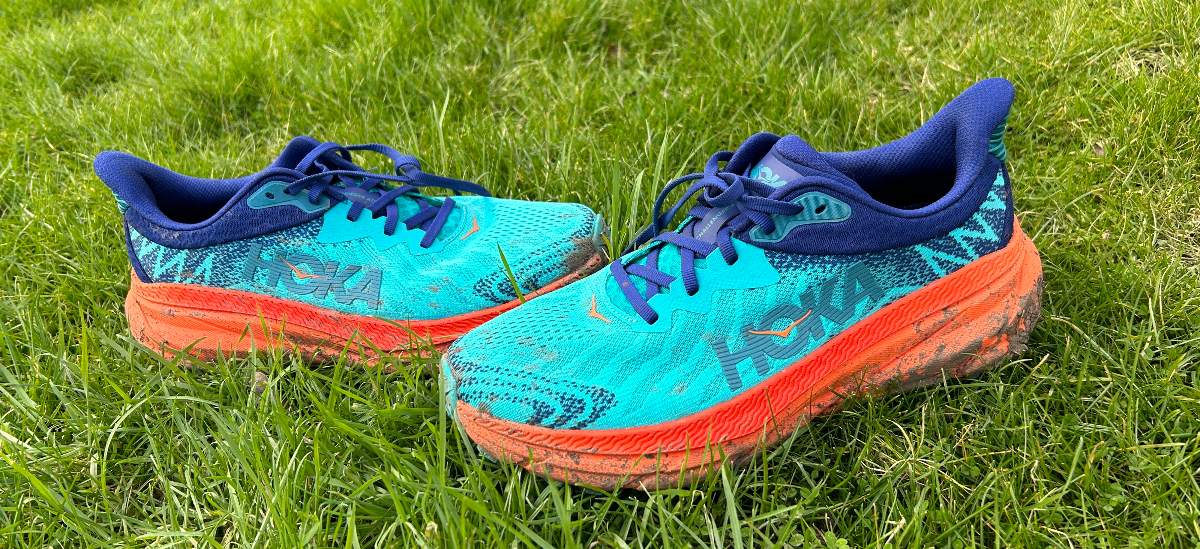Our Verdict
The Challenger 7 is a lightweight and versatile road-to-trail shoe that can handle a variety of runs and terrains. There are more specialised shoes that offer better performance on certain terrain, but as a jack-of-all-trades, it’s a great option.
For
- Versatile ride
- Grips well on road and trail
- Light but cushioned
Against
- Tricky to fit into a rotation
- Not very nimble on uneven ground
- Narrow toe box
You can trust Coach
The Hoka Challenger 7 is built to handle pretty much anything you throw at it. It’s cushioned, but lightweight, and has an outsole designed to be comfortable on the road while still gripping on the trails. It’s one of the best trail-running shoes going, and it’s not a bad shoe even if you exclusively stick to the road.
However, being so versatile comes at a cost in that there’s no one type of run where I’d rate the Challenger 7 as the best shoe available. It’s among the top options for runners who just want one shoe and do mix up their terrains, but it would be harder to fit into a shoe rotation. Even among road-to-trail shoes there are strong alternatives that are better than the Challenger 7 in some regards.
Hoka Challenger 7 Review: Price And Availability
The Challenger 7 has been available since December 2022 and costs $145 in the US and £130 in the UK.

Design And Fit
Hoka has introduced a raft of changes that make the Challenger 7 lighter, softer and more suitable for the road than the Challenger 6. The mesh upper is now softer and more pliable, and while it doesn't have as much structure or protection around the toes as full trail shoes, there is a plastic heel counter for added support there.
It’s worth noting that the Challenger 7 has quite a narrow toe box, something that is common with Hoka shoes. There is a wide version of the shoe available, though. I have a narrow foot and the fit was good for me in my normal size.
The midsole of the shoe is made from an EVA foam, which has been tweaked to be softer than the material used in the Challenger 6. The foam is clearly very light because despite the large stack of foam the Challenger 7 weighs just 9oz/257g in my UK size 9. The shoe has a 5mm drop with a stack height of 31mm in the heel and 26mm in the forefoot for the men’s shoe, and 29mm in the heel and 24mm in the forefoot for the women’s.
Hoka has also adjusted the outsole of the Challenger 7, using smaller, flatter lugs than its predecessor had in the centre to create a smoother ride when on the road. The outer lugs are longer to provide better grip on the trails.

How I Tested This Shoe
I have done a variety of runs in the Challenger 7 to test its performance at different speeds and on different terrains. I’ve used it in snow and on muddy trails, as well as on well-kept forest tracks and on the road, and done several easy runs plus a fartlek session in it.
Running Performance
The Challenger 7 arrived during a rare week of snow in London, where all my runs involved negotiating icy streets on the way to hard-packed snowy trails in the forest. It couldn’t really have been better timed, because the grip on the shoe was excellent for this kind of run, and when sticking to easy paces the cushioning on the shoe is comfortable without being too heavy or bulky.
It was a very strong first impression, and the Challenger 7 has backed that up by performing well even once the snow melted away. The forest trails I run on are muddy at this time of year and while the lugs on the outsole aren’t that deep, they have enough purchase to keep you upright unless you stray on to very boggy ground.

On slick grass, especially when running downhill, I was less confident in the grip of the shoe, but if you’re spending a lot of time on that kind of terrain you’d want a full trail shoe. For the most part, however, the grip exceeded expectations.
That’s especially true because of how well the shoe runs on the road. The ride is smooth and the small lugs didn’t create any skittishness on icy or wet pavements.
I also found that the Challenger 7 was light and fast enough to do a fartlek session in the woods on trails that were both wet and icy in patches. It isn’t an out-and-out speed shoe, and on the road I’d want a more responsive ride, but for that kind of relaxed interval session when you’re more focused on effort than specific target paces it worked well. The grip was also good when I was running at speed, though slowing down was a necessity on icy corners.
The only terrain where I did feel the size of the shoe made it a little ungainly was on uneven ground, like frozen rutted grass. The shoe isn’t heavy but it is a bit awkward when landing on narrow spots, and lower-stack trail shoes are better suited to that terrain.
While the midsole is comfortable, it doesn’t deliver the bounciest or most exciting ride. For a trail shoe it’s fine, but if you are spending more time on the road then there are more enjoyable shoes to use, including options like the Puma Velocity Nitro 2 which has a good outsole for light trail use.
Is The Hoka Challenger 7 Worth It?
I enjoyed running in the Hoka Challenger 7 and if you prefer to only have one shoe on the go at a time, and like to mix up the terrains you run on, it’s one of the strongest options available. It’s lighter than the Nike Pegasus Trail 4 and Inov-8 Parkclaw G 280, and more comfortable than the Puma Fast-Trac Nitro on the road, though I do find the Puma a faster shoe.
There is some overlap with other shoes in the Hoka range though, including the excellent Hoka Speedgoat 5, which is a full trail shoe that can handle tricky terrain better than the Challenger, but is still pretty comfortable on the road. The Hoka Torrent 2 also does a similar job, being slightly more trail-focused than the Challenger.
All are solid options, but if your trail running will involve some fairly rugged ground the Speedgoat and Torrent offer more reliable grip, and they are not uncomfortable for road running.
The Challenger 7 would be the better pick if the balance of your running is around 70% road and 30% on light trails. However, in that scenario there are excellent road running shoes that can probably handle the trails you tackle, like the Puma Velocity Nitro 2 or Nike Pegasus 39.
If you have a shoe rotation you’d be better off getting more specific tools for the job of the different types of runs you do. You can get a trail shoe for the terrain you’re likely to be on most, plus a road shoe with a livelier midsole foam than the Challenger.

Nick Harris-Fry is a journalist who has been covering health and fitness since 2015. Nick is an avid runner, covering 70-110km a week, which gives him ample opportunity to test a wide range of running shoes and running gear. He is also the chief tester for fitness trackers and running watches, treadmills and exercise bikes, and workout headphones.

